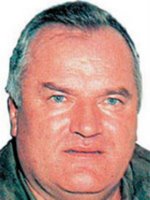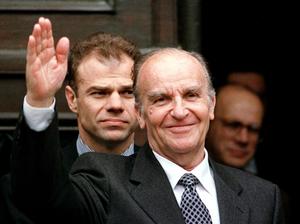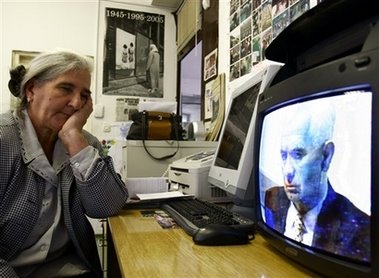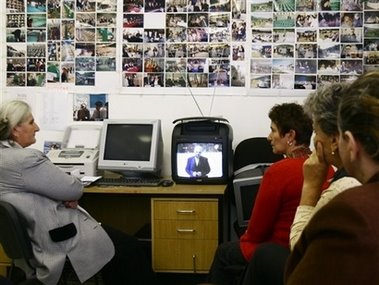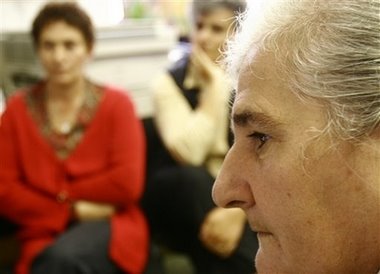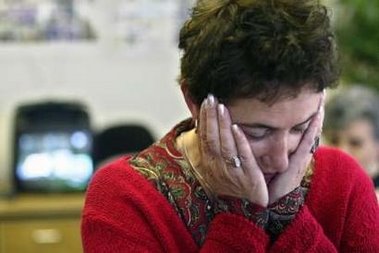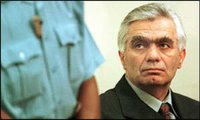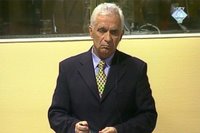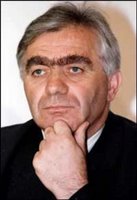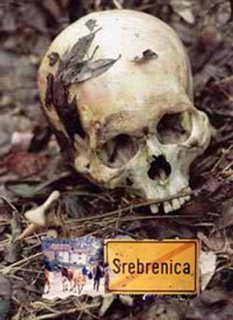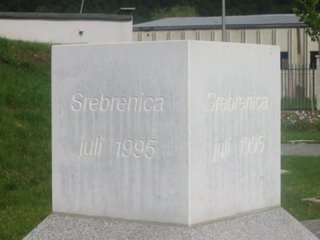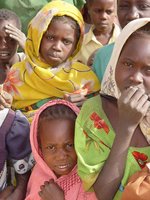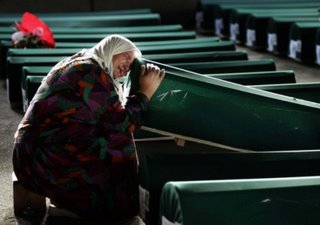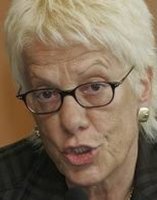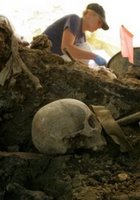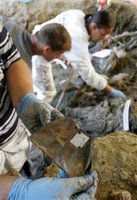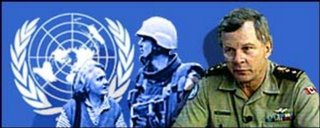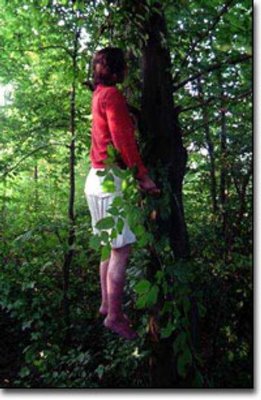DUTCH MEDAL OF BETRAYAL
Disclaimer: I have received second email from Mr. Hasan Nuhanovic on December 17th 2006. Mr Nuhanovic advised me that this article was incomplete in translation. I have also noticed that the article was poorly translated. Our readers should bear in mind that the translation of this article was made by Bosnjaci.net site, not by Srebrenica Genocide Blog.
SREBRENICA AS AN S-WORD IN THE NETHERLANDS
Hasan NUHANOVIĆ
 "In the Netherlands, during past few years, an ambiance was created in which Srebrenica was turned into "S"-word, disliked even by the second rate medias. Both official and unofficial press releases, as a reaction to numerous legitimate isssues still raised by the families of the salughtered victims, today ask if it isn't the time for the Netherlands to turn another leaf and once for all conclude the chapter called "Srebrenica"."
"In the Netherlands, during past few years, an ambiance was created in which Srebrenica was turned into "S"-word, disliked even by the second rate medias. Both official and unofficial press releases, as a reaction to numerous legitimate isssues still raised by the families of the salughtered victims, today ask if it isn't the time for the Netherlands to turn another leaf and once for all conclude the chapter called "Srebrenica".""I didn't intend to give extensive answer to first few phone calls made by Dutch journalists last week. Too many times, for the past eleven years happened that Dutch journalists inquired about my opinion or reaction regarding something that occured in their country in relation to Srebrenica events from July 1995.
I had a feeling, during past few years, also confirmed by my friends and colleagues in the Netherlands, that public opinion and medias over there are far too saturated with the subject. That immediately change their facial expressions once the world "Srebrenica" is mentioned.
Actually, by the end of nineties, only few years after genocidal crime in Srebrenica and several scandalous attempts and statements by Dutch officials, Srebrenica in the Netherlands became a taboo. Unofficially this issue is addressed only as the "subject S" since then. Therefore, not even full name of this nice Bosnian town is to be mentioned anymore, only its capital letter - "S". Like, "You know, that subject S."
And while some were claiming that ex members of Dutchbat 3, the unit of Dutch military which found itself in Srebrenica on July 1995, suffer from PTS, while part of Dutch public opinion truly accepted the excuses that Dutchbat 3 was also a victim of Srebrenica events, while Dutch officials were publishing one report after another in 1995, 1998, 2002, and 2003, I was going from one place to another both in the Netherlands and in Bosnian repeating the misfortunes that had befallen my mother, father and brother whom those same Dutch soldiers, before my very eyes, handed over to Serb soldiers at the gates of their military base in Potocari, Republic Bosnia-Herzegovina."
One part of Mr. Nuhanovic's sad narrative was particularly touching, as many Bosniaks who had worked for any UN and NGO in Bosnia during SCG agression may find similar to their own personal experience. Therefore I took the trouble of translating it for your attention. It clearly reflects the innocence and naivety of Bosniaks of 1991-1995 in dealing with arogant UN and other foreign military personnel.
"A DINNER AT MY MOTHER'S"
Since the arrival of the very first group of UNPROFOR soldiers to Srebrenica, for which, by pure chance, I happened to work for since April 1993, I had established a custom to invite all newcoming officers I have dealt with daily, home for a dinner. My parents, my brother and me lived in a house not our own, being refugees from Vlasenica, together with another 20 persons. Despite all our powerty and misery, due to the fact I had been a paid interpterer, I was able to buy some food supplies. Supplies from which my mother always new how to make up some Bosnian specialty for these foreign guests - Bosnian pies, sarma rolls and hurmasica deserts.
For each of these occasions we did our best to offer our guests food much better in quality and quantity than the one we ourselves ate every day. It was that Bosnian hospitality, I guess. Five, six officers would sit down for food and small talk, talk I would translate at the same time and my father would always say: "You, who came to Srebrenica from afar, from London, Paris, Hague, you are our window into the world. We have no newspapers, no electricity, no TV. We are completely cut from the world, and when I listen and look at you this very moment, I feel as if I'm somewhere else - somewhere in Paris, London - elsewhere in a normal world where there is no war, no suffering, no killing. Thank you for comming..."
And my mother would sit on a side, listening. These aliens in the uniforms, choking in good Bosnian food, would manage to spill it between bites: "Hasan, tell your mother she is great cook." Some Gary, another Paul, Derksen, Willian, Tony, Mark Foster, dozens of them.
Much later, in 1997, when I accidently came across Mark Foster's phone number, who left Srebrenica in 1994, and called him in England in order to ask for help in my quest for information about my missing family, he said: "I'm so sorry, Hasan. Your mother used to make such delicious cakes (referring to Bosnian hurmasica which he ate at least twenty.)" I was confused, not knowning if I am talking with someone from the twighlight zone or real person called Mark Foster.
Among many of these aliens who had eaten at my mothers, there was a Dutch captain Andre de Haan.
When, late night on July 12th, sometime around midnight and day after the fall of Srebrenica (handover by UN troops as Bosnians had no weapons any more, com.ed.), I learned that at least nine bodies of men killed in the presence of Dutch soldiers were seen before the base, we were inside Dutchbat base in the improvized office where Andre de Haan was in charge. I said to my mother and brother, who stood next to me and de Haan, what I just learned and my mother fainted. She understood then and there, that all of us will be killed, her both sons and her husband.
I caught her in fall and placed her carefully on a bench nearby. She went yellow in face. In that moment, few feet from me there was de Haan, and next to him German nurse, Christina Schmit, as well as Aussie MD O' Brien. They've just turned their back on us, pretending that nothing was going on in the room. My mother was losing consciousness, yet they were standing and just talking. Just as if nothing was going on around them. Just as if my mother was a plain piece of furniture in that room.
That same de Haan, just few week ago ate Bosnian cabbage rolls at my mother's (while the rest of the people in the house were starving, com.ed.) and made several compliments how good her cooking was.
Tomorrow, on July 13th, 1995, around 5-6 pm, that same de Haan said the condemning sentence for my family: "Hasan, tell your mother, father and brother to leave the base." He was looking at me and them, while behind us stood three well armed Dutch soldiers. Everybody was looking at us - as if saying - what are you waiting for? Outside, right in front of Dutch base, Serb soldiers were killing Bosnian people. I still kept begging them to leave my brother at least.
My brother got up. He looked at me and said: "Hasan, don't you beg them any more. I'm going out..f...them. You stay here, if you can." And he left me. Forever. Him, my mother, my father, and all other Bosniaks from the base. Dutch didn't send me out, as there was hanging on my chest a piece of plastic upon which, beside my name, was written - UN.
In that same moment, on the tallest buiding of the base, there were two flags flapping in the wind - the flag of Dutch kingdom and the flag of United Nations.
The Netherlands, Assen, military base of Dutch army. December 5th, 2006. The splendor on the chest of Dutch soldiers shines upon all the shame of the Netherlands and the whole world.
What else there is to say?
Hasan Nuhanović
Sarajevo, 5.12.2006.
Bosnian language version can be read here:
http://www.bosnjaci.net/aktuelnosti.php?id=1082&polje=teme
